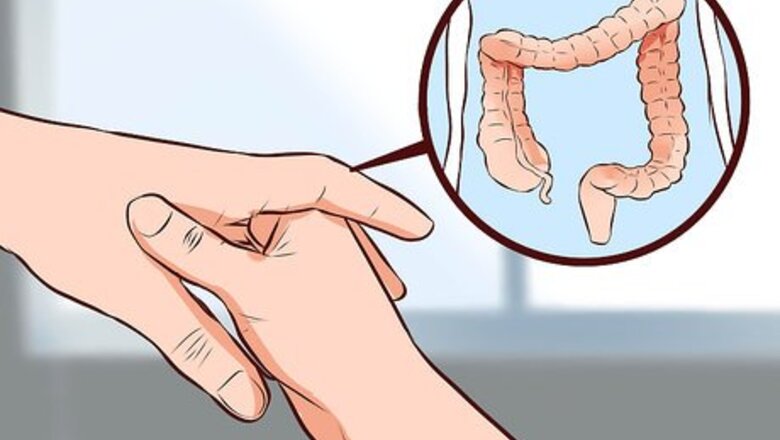
views
Using Hand and Back Pressure Points
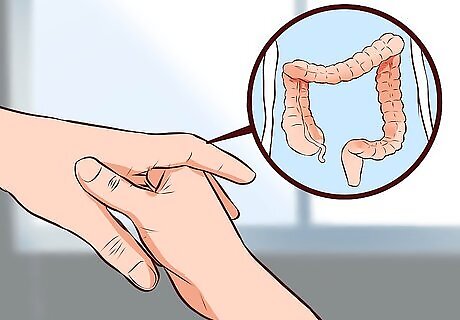
Use Hoku/Hegu/Large Intestine 4. This pressure point is considered one of the most popular ones to induce labor. It is located on the hand between the thumb and the index finger. Pinch the webbing between your index finger and thumb. You will be focusing on the area towards the middle of your hand, between the first and second metacarpal bones. Apply steady, firm pressure to this point. Then, start rubbing a circle with your fingers. When your hand gets tired, just shake it out and start again. When a contraction starts, stop rubbing the pressure point. Resume when the contraction passes. This pressure point is believed to aid in helping the uterus contract and the baby descend into the pelvic cavity. You can also use this during labor to help ease the sensation of contractions.
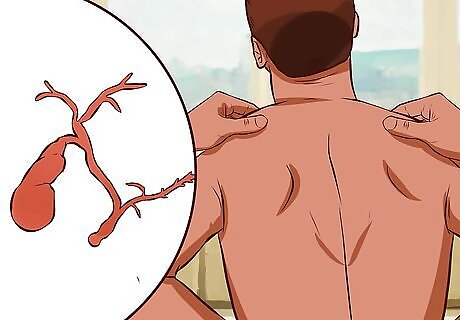
Try Jian Jing/Gallbladder 21. Gallbladder 21 is located between the neck and the shoulder. Before locating GB21, drop your head forward. Have someone find the round knob at the top of the spine, and then the ball of your shoulder. GB21 is located midway between these two points. Using your thumb or index finger, apply steady downward pressure to this point to massage and stimulate the area. You can also pinch the point between the thumb and index finger on your opposite hand, massage in a downward motion with the index finger for 4-5 seconds while releasing the pinch hold. This pressure point is also used for neck stiffness, headaches, shoulder aches, and pain.
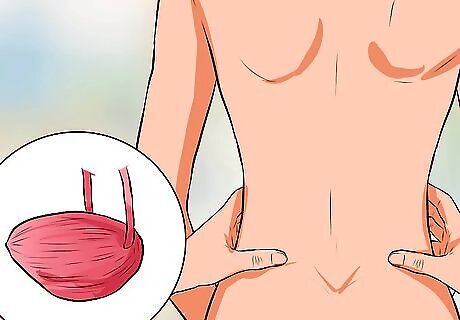
Rub Ciliao/Bladder 32. This pressure point lies on the lower back, between the back dimples and the lumbar spine. It is used for inducing labor, easing pain during labor, and helping the baby descend. To locate this point, have the pregnant person kneel on the floor or a bed. Drag your fingers down alongside the spine until you feel two small bony hollows (one on either side of the spine). These hollows will be between the dimples and spine - but not the dimples themselves. Press your knuckles or thumbs into the BL32 pressure point for constant, steady pressure or rub in a circular motion. If you cannot find the hollow, measure the length of the pregnant person's index finger. BL32 lies approximately the length of index finger above the top of the buttock crease, approximately one thumb width to the side of the spine.
Using Foot and Ankle Pressure Points
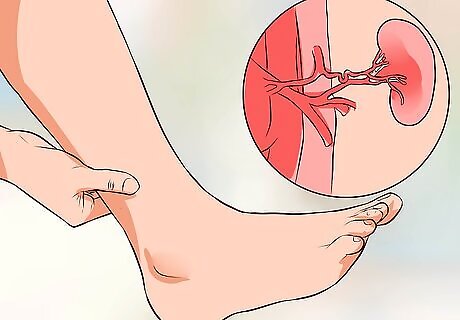
Use Sanyinjiao/Spleen 6. This pressure point is located on the lower leg, just above the ankle bone. SP6 is believed to stretch the cervix and strengthen weak contractions. This point should be used with caution. Locate the ankle bone. Place three fingers above the shin bone. Slide your fingers just off the shin bone towards the back of the leg. There will be a tender place just behind the shin. This spot is very sensitive in pregnant people. Rub in circles or apply pressure for 10 minutes, or until you have a contraction. Resume applying pressure after the contraction passes.
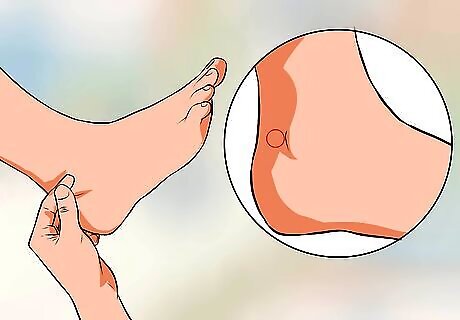
Try Kunlun/Bladder 60. This pressure point is considered helpful if your baby hasn't dropped yet. It is located on the ankle. Find the spot between the ankle bone and the Achilles tendon. Press into the skin with your thumb and apply pressure or rub in a circle. This spot is frequently used during the first stage of labor, when the baby hasn't descended yet. BL60 is thought to increase circulation and relieve pain.
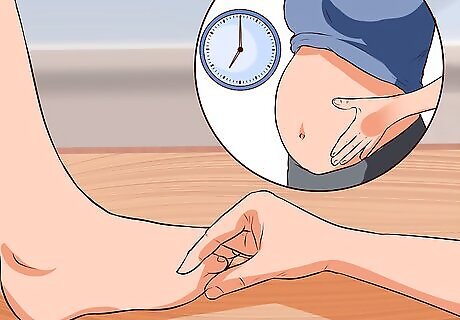
Stimulate ZhiYin/Bladder 67. This point is located in your pinky toe. It is thought to help induce labor and reposition breech babies. Take the pregnant person's foot in hand. Use your fingernail to apply pressure to the tip of the pinky toe, right under the toenail.
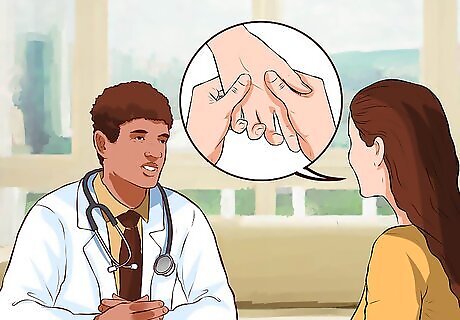
Consult your doctor or midwife if you have questions. If you are worried about the safety of you and your baby, why you have not delivered yet, or just acupressure in general, contact your obstetrician, midwife, or doula. They can answer your questions and address your concerns. If you want to find out more about acupressure during pregnancy, find a licensed acupressurist. Schedule a visit and find out more to see if it is for you.
Understanding Acupressure
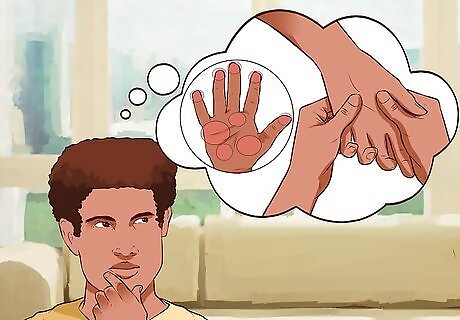
Familiarize yourself with the concept of acupressure. Acupressure is a therapy developed over 5,000 years ago in Asia that is important in Chinese medicine. It uses specific finger placement and pressure along pivotal points on the body. Acupressure most commonly uses the fingers, especially the thumbs, to massage, rub, and stimulate the pressure points. However, elbows, knees, legs, and feet can also be used. The points are thought to be arranged along channels, called meridians. According to Asian medical philosophy, stimulating these areas can release tension and increase blood flow. The popular massage technique of Shiatsu massage is a form of Asian Bodywork Therapy from Japan.
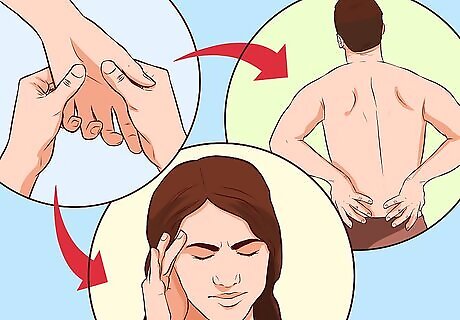
Know what acupressure is used for. Like a massage, acupressure is thought to cause deep relaxation and a decrease in muscle tension. The technique is also used to relieve pain. People use acupressure to help with nausea and vomiting, headaches, back and neck pain, fatigue, mental and physical stress, and even addiction. It is believed that acupressure and other Asian body therapies correct imbalances and blockages of the flow of vital energies through our bodies. Many Western spas and massage services have started offering acupressure massage. While many people are skeptical of acupressure's efficacy, many doctors, practitioners, and advocates of holistic health believe in the positive effects of acupressure. For example, researchers at the UCLA Center for East-West Medicine study the scientific basis of acupressure while providing explanations and practical applications of the techniques. Licensed acupressurists attend formal training programs, either at special acupressure and acupuncture schools, or through massage therapy programs. Look for an acupressurist who is an LAC (licensed acupressurist) and/or has an NCCAOM (National Certification Commission for Acupuncture and Oriental Medicine) license.
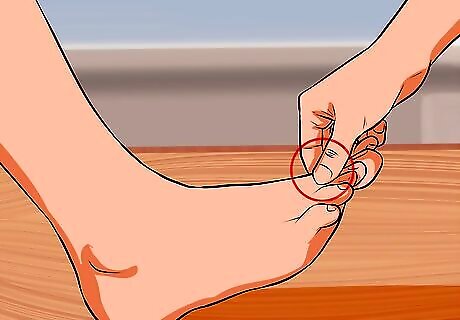
Locate the common pressure points. There are hundreds of pressure points through our bodies. Some of the common ones are: Hoku/Hegu/Large Intestine 4, which is the webbing between your thumb and forefinger. Liver 3, which is the soft flesh between your big toe and your second toe. Sanyinjiao/Spleen 6, which is on the lower calf. Many pressure points are called by multiple names, and sometimes designated by an abbreviation and number, like LI4 or SP6.
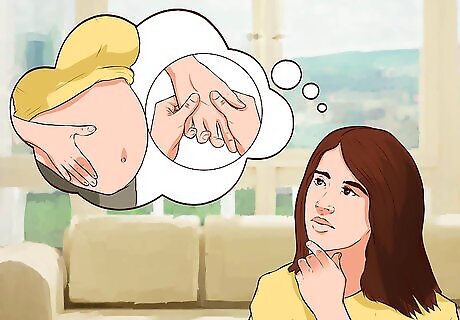
Know when to use acupressure during pregnancy. Acupressure has been attributed to helping pregnant people with morning sickness and nausea, with alleviating back pain, with pain management during labor, and with naturally inducing labor. Though acupressure is safe to use during pregnancy, always use caution. You may want to contact your physician, a doula who practices acupressure, or a licensed acupuncturist or acupressurist before trying it on yourself. All pressure points connected to inducing labor should be avoided on a pregnant person until after 40 weeks. There is a risk of applying pressure to the points that induce labor too early causing problems.















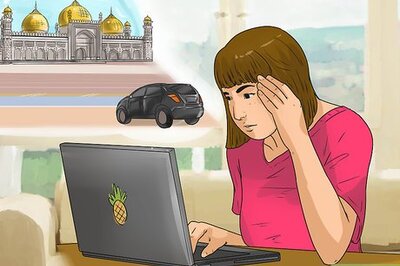

Comments
0 comment